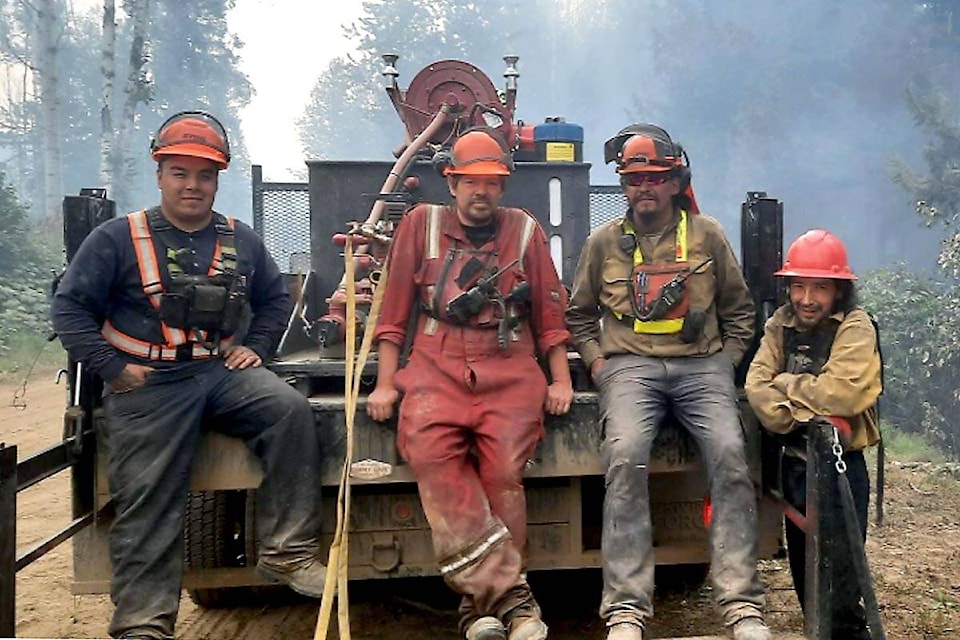EVAN: Please run this with BSW story
Monday’s fire provided a prime example of how initial attack teams in the area, including the newly-created teams out of Simpcw First Nation, would be deployed.
The Indigenous Initial Attack Initiative got the green light last season, and was first brought forward by SFN Coun. Ron Lampreau Jr., who is also fire chief for the Chu Chu Volunteer Fire Department. The seasonal pilot project was signed by BCWS last year.
Lampreau is hoping this year to have two teams of four members to work alternating shifts for seven-day coverage. They’re just awaiting the official go-ahead from BCWS.
He said they want the IIAI teams to be trained to the same standard as BCWS crews, performing prescribed burns and fuel-reduction programs when there are no fires, and doing the initial attack in response to calls from Kamloops Fire Centre. The team services area as far as 150 kilometres away from the home base in Chu Chua, including Clearwater and potentially as far north as Blue River.
They also want the IIAI teams to be able to call in for additional resources, such as air support, without having to go through BCWS, Lampreau said. They will also train BCWS crews in Simpcw culture, such as how to avoid archaeological sites and what to look for.
But the IIAI teams are not supposed to be a replacement for BCWS crews, said Lampreau.
“We were to add additional resources,” he told the Times. “They’re taking away from what the whole idea of the Indigenous Initial Attack was about. It’s frustrating.”
newsroom@clearwatertimes.com
Like us on Facebook and follow us on Twitter
